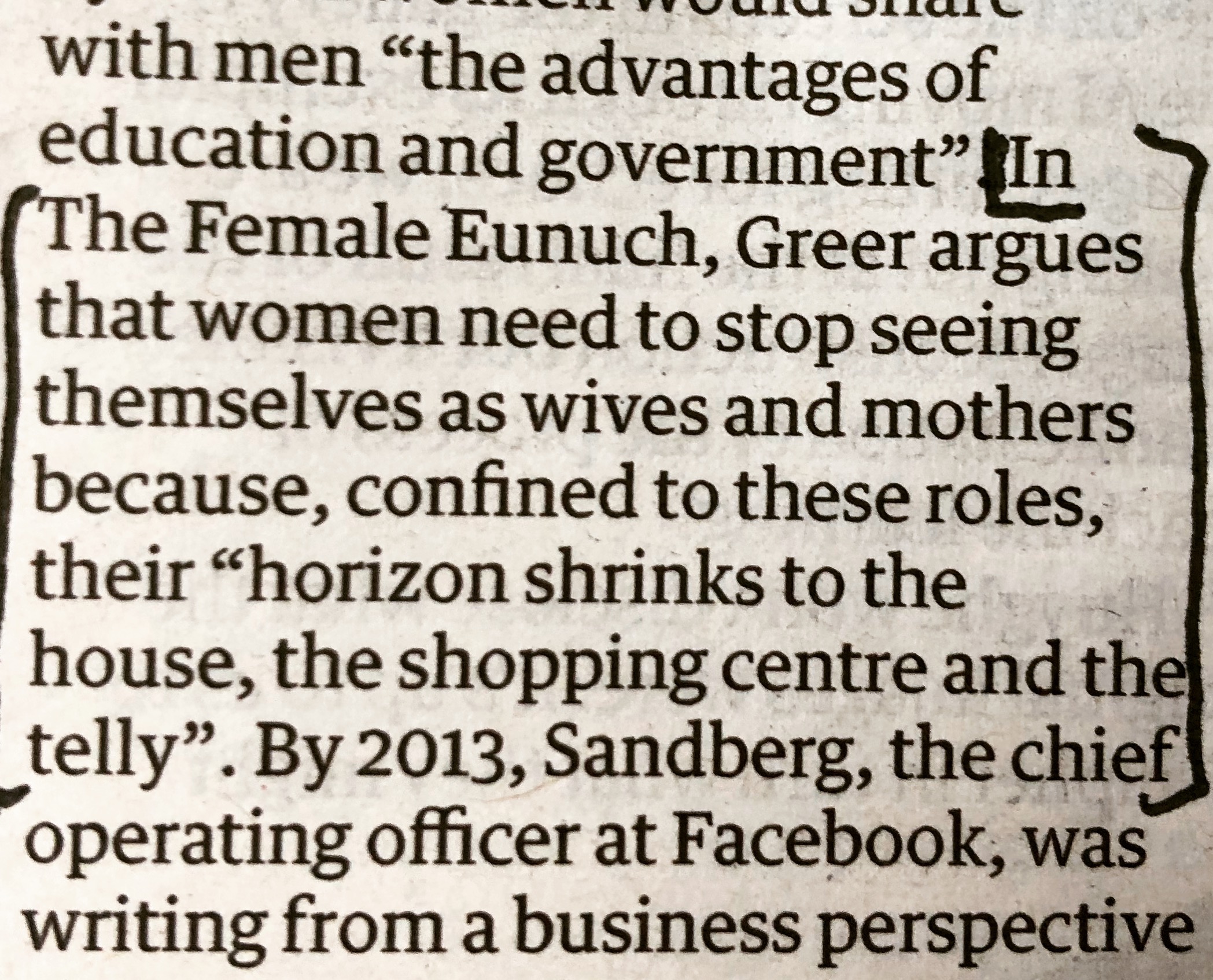Sitting on the train to Waterloo, coffee and newspaper in hand, excited at the prospect of a day visiting galleries in London with my MA Fine Art colleagues, I came across an article in the Guardian newspaper, by Carl Cederstrom entitled “How to be a good man: what I learned from a month reading the feminist classics”. In it, he describes his decision to read some of the feminist classics, in an attempt to listen and gain an insight into the #MeToo movement.
A quote by Germaine Greer in The Female Eunuch, felt particularly apt to me in that moment: “Women need to stop seeing themselves as wives and mothers because confined to these roles, their ‘horizon shrinks to the house, the shopping centre and the telly’.” My objective for the day was to broaden my ‘horizon’.
We started the day at the Turner Prize exhibition at Tate Britain. The choice of four video installations seemed a rather narrow view of the contemporary British art scene. However, all four were radically different in their subject matter and curation, making the experience both an informative and thought provoking one.
Charlotte Prodger’s 33 minute video BRIDGIT explores ideas around changing identity, using her own experiences as a reference. The film cuts between intimate scenes filmed in her home with her cat and footage taken in the harsh, wild expanse of the Scottish highlands and North Sea. Prodger chose to film the footage using her iphone, which allows for a private filming experience and creates a sense of intimacy, particularly in the scenes set in her own home. It is possible to perceive the motion of her breathing, as the camera gently rises and falls whilst looking at her feet in front of her. Prodger narrates the 33 minute film in a gentle, subdued voice sharing her own experiences as a lesbian growing up, being asked “are you a boy or a girl” and telling stories of antiquity and the idea of choosing a name to suit your changing identity. Prodger’s work resonated with my own ideas about how my identity has changed since becoming a mother and my need to rediscover who I am through my own work.
Aesthetically, I found Luke Willis Thompson’s films the most inspiring. He films portraits of those who have lost loved ones to police violence. The large black and white film is projected onto the wall, creating a ghostly reflection of the image on the floor. The stillness of the portraits capture the sorrow of those left behind. His black and white, three quarter profile portrait of Diamond Reynolds, who broadcast a live video of her boyfriend being shot by police in Minnesota, is in stark contrast to the viral video viewed by millions online. Thompson has chosen to film in 35mm film and projects the beautiful images using an elaborate projector that whirrs and clutters throughout.
Luke Willis Thompson
The photograph here is taken from his House film, in which Thompson shows us a house made of skin and pins, by the late artist Donald Rodney. The images are beautiful, yet horrifying when you realise what the object is made of. It is reminiscent of images taken from Nazi concentration camps of piles of human hair and lampshades made of human skin.
Heidi Bucher’s exhibition at the Parasol Unit held a similar skin-like quality in her latex casts “Raumhaut” (room skins) of buildings and rooms. In particular, the latex cast of the door to the Bellevue Kreuzlingen psychiatric sanatorium Kleines Glasportal, Bellevue Kreuzlingen 1988, had a haunting quality about it. Parts of the paintwork from the door were stuck to the back of the latex, hinting at the subsequent dereliction of the building.
Heidi Bucher
The fragility of the pieces juxtaposes the sheer physical scale of the buildings and rooms she chose to cast. There is a sense of history, deterioration and mortality about these casts, yet each provides an aesthetically beautiful image, as if Bucher was trying to capture the essence of a room’s history.
For a few hours, I felt the blinkers of motherhood lift and took the time to look around me, to observe and allow my thoughts to consider the artists’ intentions. And in so doing, a new realm of possibilities in my own artwork began to take shape.


